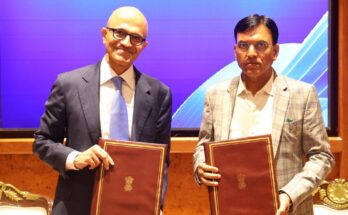New Delhi: ‘All parents want the best for their children’ is a centuries old truth. For Indian parents this is by providing them with the best education, confirms a survey.
Women, 55 per cent, more than men, 43 per cent, make investing in their child’s education a top long-term goal, said the survey done by Scripbox, a digital wealth management service.
In addition, investing in their children’s education is prioritised by Indians in both metros and non-metros, it said. While investing to put aside an emergency fund emerged as the most important short-term goal, owing to the current pandemic, investing in children’s education (46 per cent) topped other goals such as retirement (43 per cent), healthcare (37 per cent) or buying a house (29 per cent).
The survey included 630+ respondents in the age bracket of 25-55+ years across India. An equal number of men and women responded to the survey. Among the total number of respondents, 50 percent were under the age of 35.
The survey points to different priorities for those over the age of 35 years and those below. For those above 35, investing in their child’s education, 58 per cent, is by far their top priority. For millennials, those under 35 years of age, investing in a house trumps building a corpus for their child’s education.
Scripbox recommends that while individual investment goals are important, investors must have a holistic approach to their planning. They should begin by having a financial plan in place that takes into account different goals at different life stages. With education costs, right from pre-primary to university having escalated faster than inflation over the last decade or so, Scripbox offers the following recommendations for Indians to be prepared.
Work backwards while planning for the amount required. For a private college education in India, the fee over the next decade can be anywhere between Rs 8-15 lakh for the entire graduation course and a similar amount reaching up to Rs 25 lakh or so for post-graduation. After accounting for a 12 per cent escalation in annual education cost, it is an expense of around Rs 14 lakh on an average and upwards. This means you need a sum upwards of Rs 4.5 lakh each year for three years to fund higher education. In addition, factoring in a yearly increase, recommend upping the yearly investment amount by 5-10 per cent.
If you have time on your side, start a systematic investment plan (SIP) in an equity mutual fund. This will require you to invest every month regularly in an equity mutual fund, an amount that will accumulate gains over the next few years to help you achieve that target amount.
When you get closer to needing the money, move the corpus to a debt fund for safety of capital. The monthly SIP amount should be such that your equity investment itself grows to achieve the target amount net of taxes, while debt is simply for safety.
If you are planning to send your child out of the country for education it is essential to invest in a basket of algorithmically selected Indian and US mutual funds. You can invest in the US mutual funds via an international fund of funds. This hedges against the appreciating US dollar.
If you have less than 5 years to fund the education expense, then opt for a 50-50 equity and debt allocation. At the same time begin by investing whatever lump sum you can in equity.
Remember, equity investments need time to mature. In the short term, daily market volatility can bear negatively on returns. Hence, the sooner you start, the higher the chances of achieving your expected return. An early start also means lower monthly investment.




